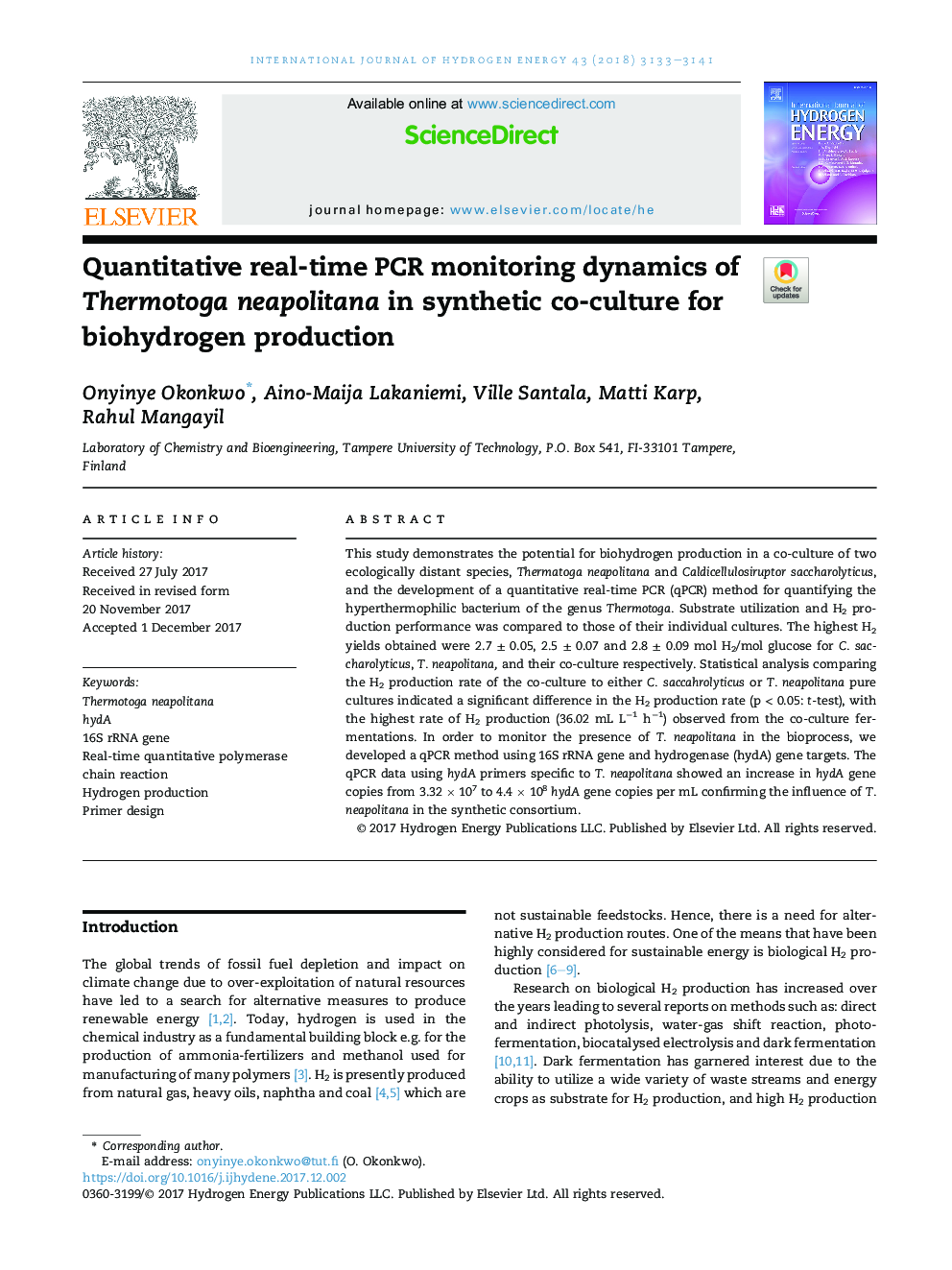| Article ID | Journal | Published Year | Pages | File Type |
|---|---|---|---|---|
| 7707714 | International Journal of Hydrogen Energy | 2018 | 9 Pages |
Abstract
This study demonstrates the potential for biohydrogen production in a co-culture of two ecologically distant species, Thermatoga neapolitana and Caldicellulosiruptor saccharolyticus, and the development of a quantitative real-time PCR (qPCR) method for quantifying the hyperthermophilic bacterium of the genus Thermotoga. Substrate utilization and H2 production performance was compared to those of their individual cultures. The highest H2 yields obtained were 2.7 ± 0.05, 2.5 ± 0.07 and 2.8 ± 0.09 mol H2/mol glucose for C. saccharolyticus, T. neapolitana, and their co-culture respectively. Statistical analysis comparing the H2 production rate of the co-culture to either C. saccahrolyticus or T. neapolitana pure cultures indicated a significant difference in the H2 production rate (p < 0.05: t-test), with the highest rate of H2 production (36.02 mL Lâ1 hâ1) observed from the co-culture fermentations. In order to monitor the presence of T. neapolitana in the bioprocess, we developed a qPCR method using 16S rRNA gene and hydrogenase (hydA) gene targets. The qPCR data using hydA primers specific to T. neapolitana showed an increase in hydA gene copies from 3.32 Ã 107 to 4.4 Ã 108hydA gene copies per mL confirming the influence of T. neapolitana in the synthetic consortium.
Keywords
Related Topics
Physical Sciences and Engineering
Chemistry
Electrochemistry
Authors
Onyinye Okonkwo, Aino-Maija Lakaniemi, Ville Santala, Matti Karp, Rahul Mangayil,
